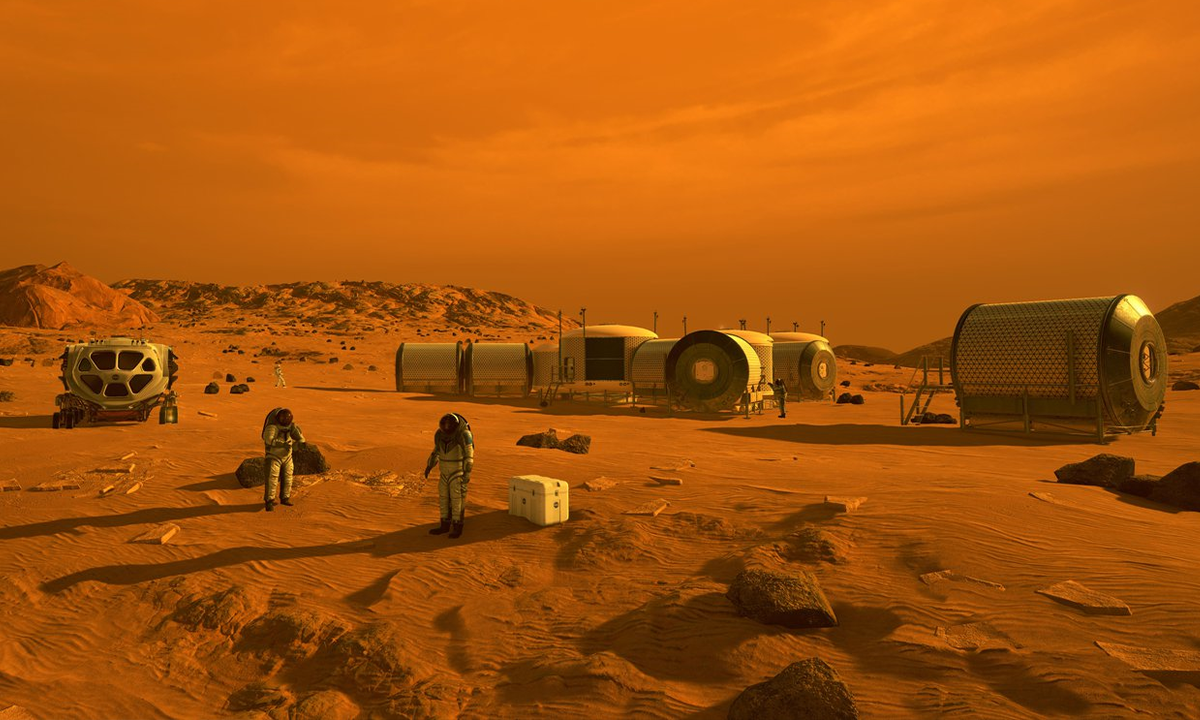The Independent's journalism is supported by our readers. When you purchase through links on our site, we may earn commission.
Martian astronauts could use bacteria as fuel to get back to Earth, scientists find
The plan could save significant power while on Mars, as well as generating oxygen to support human settlers

Scientists have developed a way to make rocket fuel on Mars that could be used by future astronauts to get back to Earth.
Researchers at the Georgia Institute of Technology found out that carbon dioxide, sunlight, and frozen water – all resources that are native to the Red Planet – could be used in conjunction with two kinds of microbes that would need to be transported by a preliminary mission.
Cyanobacteria (algae) would use carbon dioxide from Mars’ atmosphere and create sugars when exposed to sunlight, while an engineered E. coli bacterium would turn those sugars into propellant.
This propellant, called 2,3-butanediol, is currently in existence on Earth. It is used to make polymers for rubber.
The rockets planned for leaving Mars are designed to use methane and liquid oxygen, neither of which are native to the red planet. These would therefore have to be transported to Mars at great expense and resource. It is estimated that carrying 30 tons of methane and liquid oxygen would cost around $8 billion.
Nasa has proposed using a catalyst to turn the carbon dioxide on Mars into liquid oxygen, but the issues of methane remain. The scientists from Georgia say that making the propellant directly on Mars would reduce costs, as well as generating 44 tons of oxygen as a byproduct which could then be used to support human settlements.
The first steps in this process would be taking plastic to Mars that could be assembled into photobioreactors about the size of four football pitches. The cyanobacteria would grow via photosynthesis, and the enzymes in a separate reactor would break them down into sugar to feed the E. coli.
Although the components are three times heavier than the methane that would need to be shipped to Mars in Nasa’s proposal, it would require 32 per cent less power to operate.
“You need a lot less energy for lift-off on Mars, which gave us the flexibility to consider different chemicals that aren’t designed for rocket launch on Earth,” said researcher Pamela Peralta-Yahya. “We started to consider ways to take advantage of the planet’s lower gravity and lack of oxygen to create solutions that aren’t relevant for Earth launches.”
The team is now looking to optimise the biological processes and the materials necessary for the plan, which could improve the speed at which the bacteria grows or lower the size of the photobioreactor.
“We also need to perform experiments to demonstrate that cyanobacteria can be grown in Martian conditions,” said professor Matthew Realff, who works on algae-based process analysis.
“We need to consider the difference in the solar spectrum on Mars both due to the distance from the Sun and lack of atmospheric filtering of the sunlight. High ultraviolet levels could damage the cyanobacteria.”
A research paper about this process, titled ‘Designing the bioproduction of Martian rocket propellant via a biotechnology-enabled in situ resource utilization strategy’, has been published in the journal Nature Communications.
Using bioreactors on Mars has been proposed before, but to develop food and medicine for Martian settlers. All species of the bacteria anabaena cyanobacteria can be used to produce oxygen through photosynthesis, while others can turn atmospheric nitrogen into nutrients on Earth, but a bioreactor is necessary because the atmospheric pressure on Mars is too low for liquid water.
SpaceX executive Elon Musk says he plans to send the first SpaceX craft to Mars by 2022, with humans following within the next four to six years.
Subscribe to Independent Premium to bookmark this article
Want to bookmark your favourite articles and stories to read or reference later? Start your Independent Premium subscription today.

Join our commenting forum
Join thought-provoking conversations, follow other Independent readers and see their replies